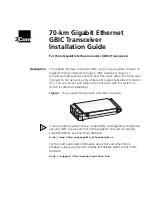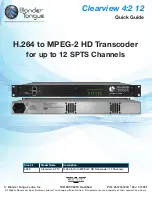
44
UNIDEN UH9060/UH9080
UHF CB Transceiver
Operation - Special Features
SELCALL Settings
Tone Period
Tone period is the duration of one tone in a Selcall ID sequence. The setting of this
parameter depends on the type of application. On long distance communications, for
example: where the signal strength of the transmitted information is greatly reduced and
affected by noise, it is advisable to use a longer Tone Period. A long Tone Period gives
the decoder more time and information to check and evaluate the code.
NOTE
However, be sure that all the radios in your group use the same Tone
Period setting. Otherwise you will not be able to selectively call one
another.
The UH9060/UH9080 allows you to select which Tone Period is best for you. The three
most commonly used tone settings (40,70 or 100 mSec) are available. With the freedom
to change this parameter, you can easily adapt to the existing system in your group
without the inconvenience of having the unit serviced by the dealer.
1. Switch Off the Power.
2. Press and hold
[POWER]
and
[MENU]
. The SELCALL Settings Menu will display (no
tone will sound).
3. Press
[MENU]
repeatedly to select the Tone Period setting - which is indicated on the
display as Pd.
4. Press
[SCAN]
WRHGLWWKHVHWWLQJ7KHFXUUHQWVHWWLQJÀDVKHV
5. Press
/
to select the desired tone period from 40ms, 70ms or 100ms.
6. Press
[SCAN]
to exit the setting.
7. Press and hold
[ENTER]
, to save and exit programming mode.
Lead-in Delay
Lead-in delay is a Selcall transmission parameter that ‘wakes-up’ and helps the receiver
of the other radio to lock onto the incoming signal. Each time a Selcall ID is transmitted,
the Lead-in Delay attaches itself to the beginning of the code sequence and causes the
transmitter to be on for a longer period prior to the code transmission. This makes for a
stronger communication link between the transmitter and the other receiver.
One major advantage to having the longer Lead-in Delay is when selectively calling
another radio via a repeater station. A longer Lead-in Delay helps to stabilise both the
communication link from your radio to the repeater station and from the repeater station
to the other radio.













































